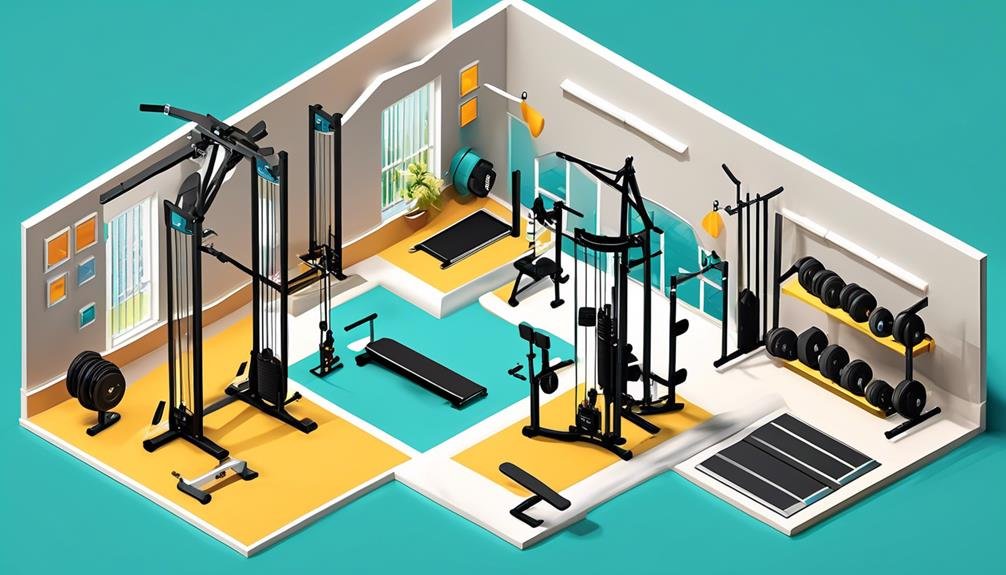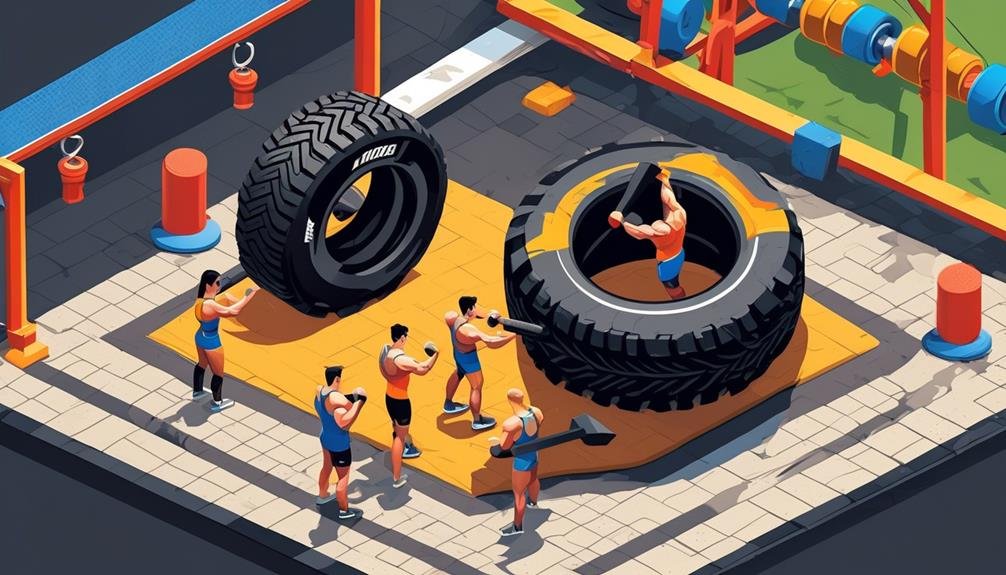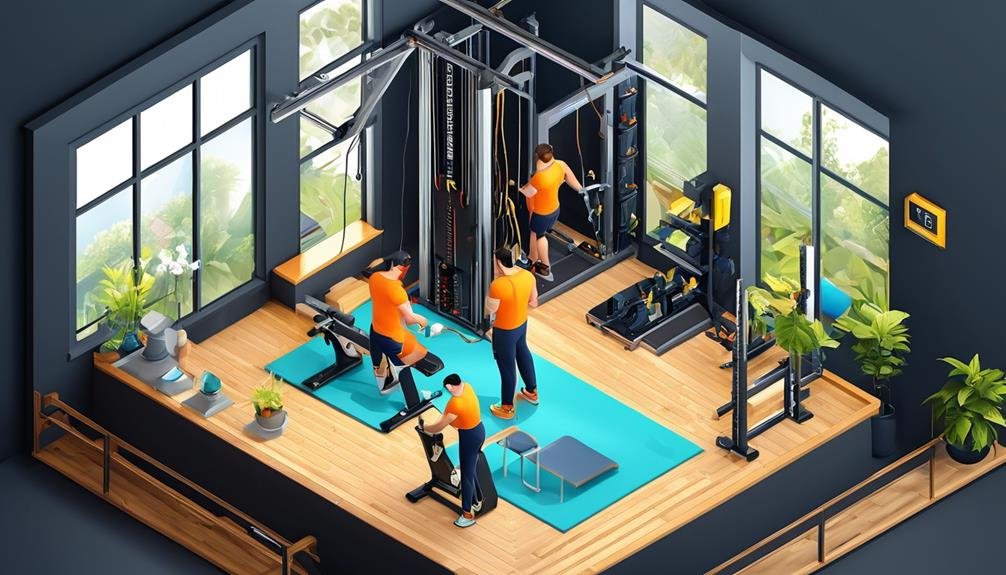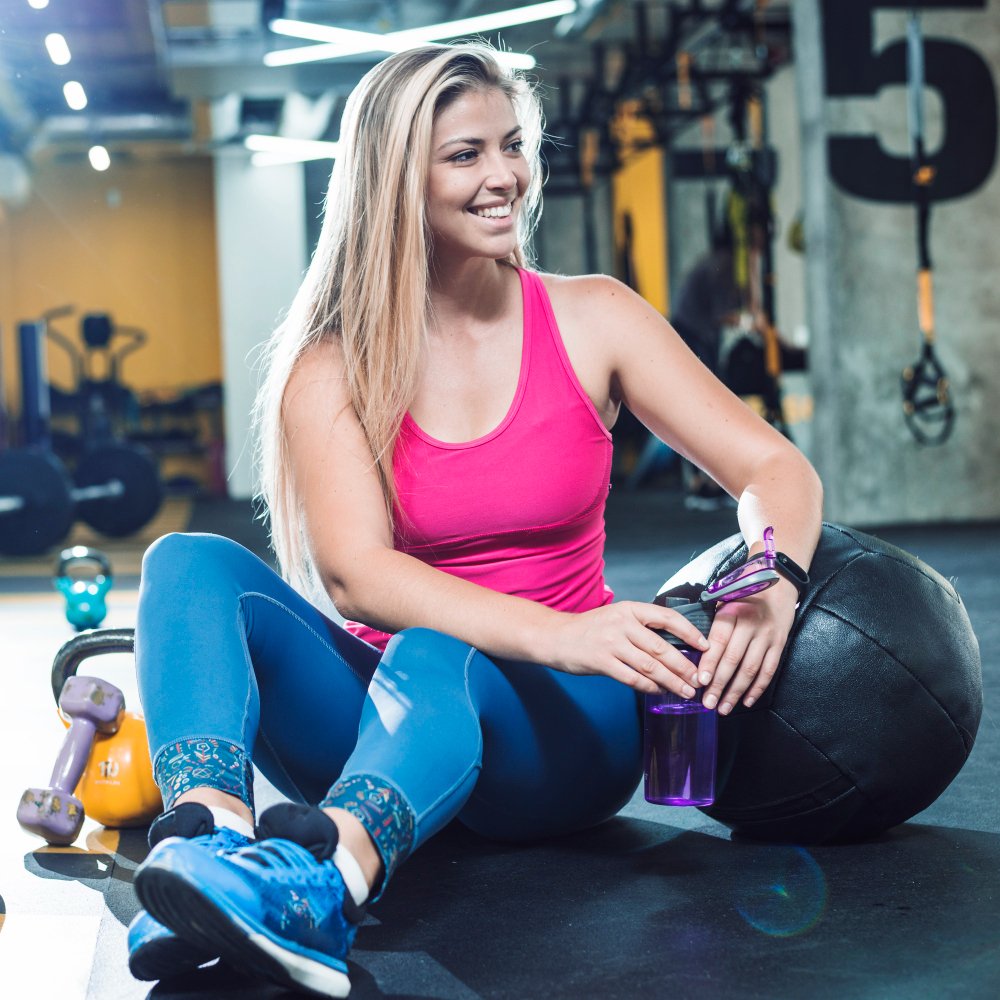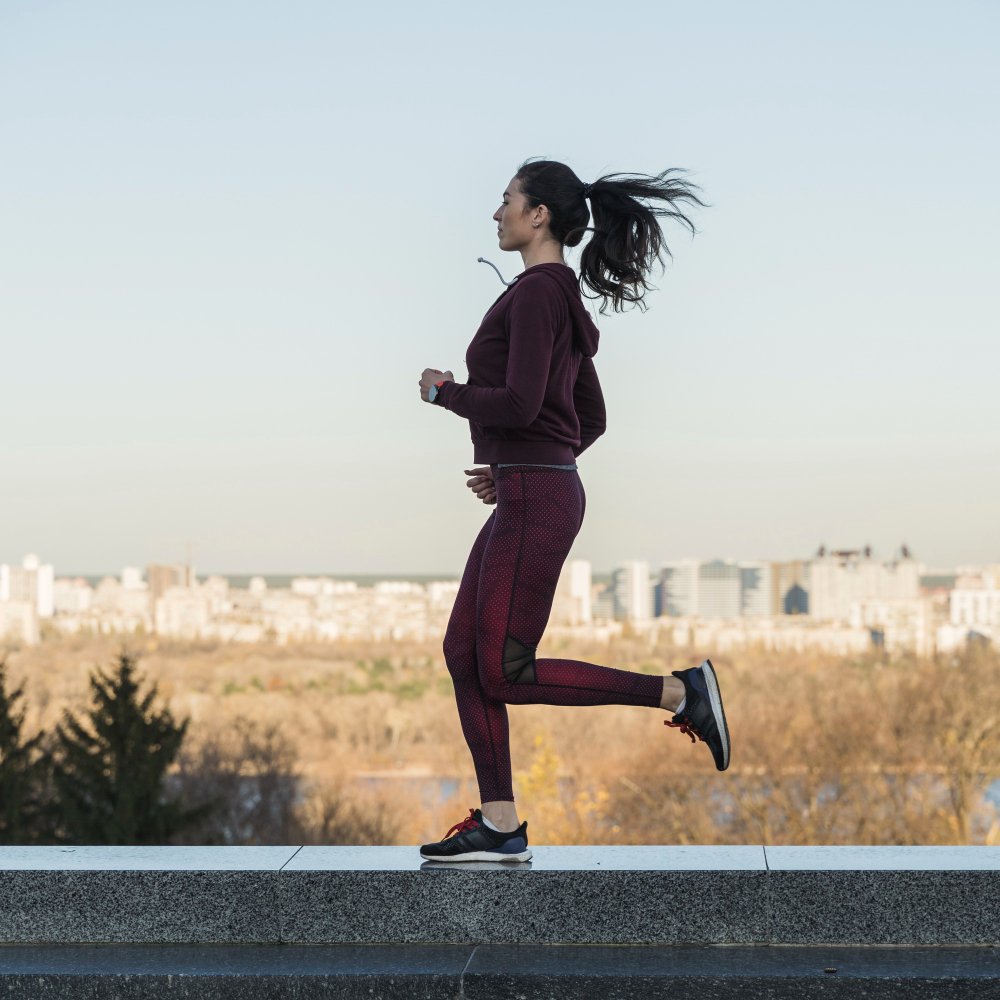After an intense home workout, your body is like a furnace, radiating heat and energy. You can feel the sweat pouring down your face, your heart pounding in your chest, and your muscles pulsating with exertion.
But now, it's time to cool down and bring your body back to a state of calm. So, what are the best options for cooling down after such a workout?
Well, let's explore some effective techniques and strategies that will help you lower your body temperature, ease muscle soreness, and promote recovery.
Key Takeaways
- Incorporate stretching exercises and deep breathing techniques into your cool-down routine to reduce heart rate, prevent muscle stiffness, improve flexibility, and promote relaxation.
- Consider using cold therapy, such as ice packs or cold showers, to reduce inflammation, provide pain relief, minimize muscle damage, and speed up recovery.
- Incorporate yoga or meditation into your post-workout routine to reduce stress levels, improve flexibility, enhance mental focus, and aid in recovery.
- Use foam rolling and massage balls for self-myofascial release to enhance post-workout recovery, improve muscle elasticity, reduce soreness, and target specific muscle groups.
Stretching Exercises
To properly cool down after your home workout, it's essential to incorporate stretching exercises into your routine. Stretching helps to gradually reduce your heart rate and gently bring your body back to its resting state. It also helps to prevent muscle stiffness and soreness by promoting blood circulation and improving flexibility.
There are different types of stretching exercises you can include in your cool-down routine.
Static stretching is one of the most common types of stretching. It involves holding a stretch for 15 to 30 seconds, targeting specific muscles or muscle groups. Examples of static stretches include toe touches, quadriceps stretches, and hamstring stretches.
Dynamic stretching, on the other hand, involves moving your body through a full range of motion. This type of stretching is ideal for warming up before a workout, but it can also be beneficial during your cool-down. Examples of dynamic stretches include arm circles, leg swings, and walking lunges.
Remember to focus on major muscle groups such as your legs, back, arms, and chest. It's important to stretch both sides of your body equally to maintain balance and prevent muscle imbalances. Take deep breaths while stretching and avoid bouncing or jerking movements, as this can lead to injury.
Incorporating stretching exercises into your cool-down routine will help you relax, improve your flexibility, and prevent injuries.
Deep Breathing Techniques
After completing your stretching exercises, it's important to focus on deep breathing techniques during your cool-down.
Deep breathing helps to calm your mind, lower your heart rate, and promote relaxation after an intense workout.
One effective technique is diaphragmatic breathing, also known as belly breathing. To do this, sit or lie down in a comfortable position and place one hand on your chest and the other on your abdomen. Take a slow, deep breath in through your nose, feeling your abdomen rise as you fill your lungs with air. Exhale slowly through your mouth, allowing your abdomen to gently fall. Repeat this for several breaths, focusing on the sensation of your breath as it enters and leaves your body.
Another technique is the 4-7-8 breathing method, which involves inhaling for a count of four, holding your breath for a count of seven, and exhaling for a count of eight. This technique can help to reduce stress and promote a sense of calm.
Remember to take deep, slow breaths, and allow yourself to fully relax during your cool-down.
Ice Packs or Cold Compresses
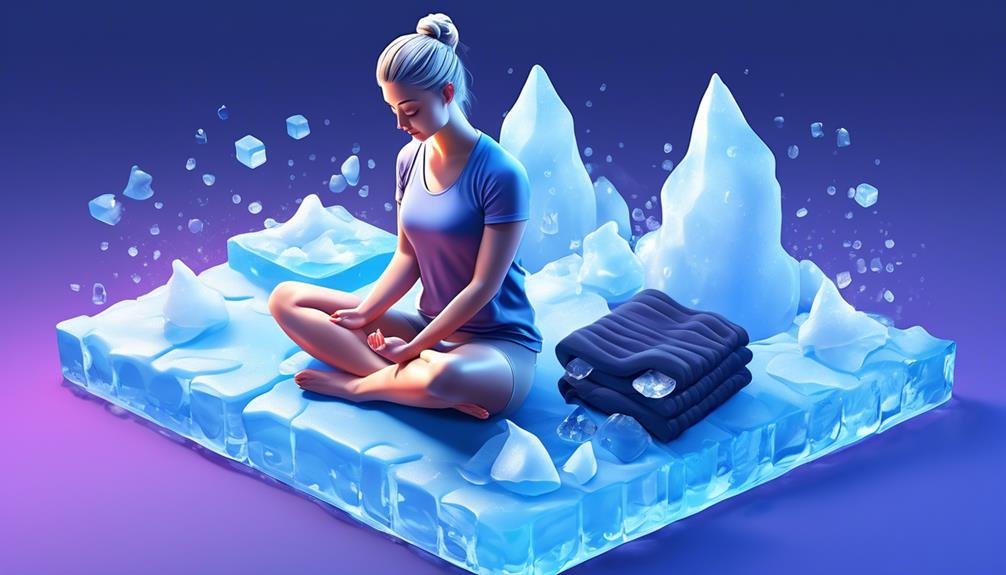
Consider using ice packs or cold compresses to help reduce inflammation and soothe sore muscles after your home workout. Applying cold therapy can provide immediate relief and aid in the recovery process. Here are five reasons why ice packs or cold compresses are beneficial for cooling down after a workout:
- Reduce inflammation: Cold therapy constricts blood vessels and reduces blood flow to the affected area, which helps to decrease inflammation and swelling.
- Relieve pain: The cold temperature numbs the nerve endings, providing pain relief and reducing discomfort.
- Minimize muscle damage: Ice packs or cold compresses can help prevent further damage to muscles by reducing the metabolic rate and slowing down cellular processes.
- Decrease muscle soreness: Cooling down with cold therapy can alleviate muscle soreness by reducing the accumulation of lactic acid and other metabolic waste products.
- Speed up recovery: Cold therapy promotes faster recovery by increasing blood circulation once the ice pack or cold compress is removed. This enhanced circulation helps remove waste products and deliver oxygen and nutrients to the muscles, aiding in their repair.
Remember to wrap the ice pack or cold compress in a towel or cloth to prevent direct contact with your skin and limit the application to 15-20 minutes at a time.
Cold Showers or Baths
Now let's explore the benefits of incorporating cold showers or baths into your post-workout routine.
Cold showers or baths can be a refreshing and effective way to cool down after a home workout. The cold water helps to lower your body temperature, reducing inflammation and preventing excessive sweating.
It also helps to constrict blood vessels, reducing muscle soreness and promoting faster recovery. Cold showers or baths can provide immediate relief to tired muscles and joints, helping to alleviate any discomfort or pain you may be experiencing.
Additionally, the cold water can stimulate the release of endorphins, which can improve your mood and reduce stress levels. Taking a cold shower or bath after your workout can also help to improve circulation and boost your immune system.
However, it's important to note that cold showers or baths may not be suitable for everyone, especially those with certain medical conditions. It's always a good idea to consult with your healthcare provider before incorporating cold showers or baths into your post-workout routine.
Yoga or Meditation

Incorporate yoga or meditation into your post-workout routine for a calming and centering experience. These practices offer numerous benefits that can complement your fitness regimen. Here are five reasons why you should consider adding yoga or meditation to your cooling down routine:
- Stress reduction: Yoga and meditation can help lower stress levels and promote relaxation. The deep breathing techniques and gentle movements in yoga can help calm your mind and release tension in your body.
- Flexibility and mobility: Yoga poses help improve flexibility and mobility by stretching and strengthening your muscles. Regular practice can lead to increased range of motion, better posture, and reduced risk of injury.
- Mental focus and clarity: Both yoga and meditation require concentration and focus, which can improve your mental clarity and enhance your ability to stay present in the moment. This can be especially helpful in relieving post-workout mental fatigue.
- Recovery and rejuvenation: Yoga and meditation can aid in post-workout recovery by promoting circulation, reducing muscle soreness, and restoring energy levels. These practices encourage deep rest and relaxation, allowing your body to recharge and repair.
- Mind-body connection: Yoga and meditation encourage a deeper connection between your mind and body. By tuning in to your breath and sensations during these practices, you can develop a greater awareness of your body's needs and enhance your overall well-being.
Incorporating yoga or meditation into your post-workout routine can provide a holistic approach to cooling down, improving both your physical and mental well-being.
Using a Foam Roller or Massage Ball
To enhance your post-workout recovery and release muscle tension, try incorporating the use of a foam roller or massage ball. These tools are excellent for self-myofascial release, a technique that helps break up muscle knots and adhesions, improve blood flow, and reduce muscle soreness.
Foam rollers are long cylindrical foam tubes that you can roll your body over, targeting specific areas of tightness or discomfort. Massage balls, on the other hand, are smaller and provide a more targeted and intense pressure.
Using a foam roller or massage ball after your workout can help alleviate muscle tightness and improve flexibility. By applying pressure to specific points, you can release tension in your muscles and improve their range of motion. It's important to remember to start slowly and gently, gradually increasing the pressure and intensity as you go. Roll or massage each muscle group for about 30 seconds to a minute, focusing on any areas of soreness or tightness.
Incorporating foam rolling or using a massage ball into your post-workout routine can be highly beneficial for your recovery. It's a cost-effective and convenient way to relax your muscles, reduce muscle soreness, and improve your overall performance in future workouts.
Frequently Asked Questions
Should I Eat or Drink Anything Specific After a Home Workout to Help Cool Down?
You should replenish your body with a cool drink and a light snack after a home workout to help cool down. Hydrating with water or a sports drink and eating a combination of protein and carbohydrates can aid in recovery.
Can I Use a Heating Pad Instead of Ice Packs or Cold Compresses for Post-Workout Cooling?
You should avoid using a heating pad for post-workout cooling. Instead, opt for ice packs or cold compresses. These options help reduce inflammation and muscle soreness, promoting faster recovery.
How Long Should I Wait Before Taking a Cold Shower or Bath After a Home Workout?
After a home workout, it's important to cool down properly. You may be wondering how long to wait before taking a cold shower or bath. The general guideline is to wait about 10-15 minutes before cooling down with cold water.
Is It Necessary to Do Yoga or Meditation After a Workout for Cooling Down?
It's not necessary to do yoga or meditation after a workout for cooling down, but it can be beneficial. Other options like stretching, foam rolling, or taking a cold shower are also effective ways to cool down.
Are There Any Specific Areas on the Body Where I Should Focus on Using a Foam Roller or Massage Ball for Post-Workout Cooling?
Focus on using a foam roller or massage ball on specific areas of your body to cool down after a home workout. These tools can help release tension, increase blood flow, and aid in muscle recovery.
Conclusion
To effectively cool down after a home workout, try incorporating the following techniques:
- Stretching exercises
- Deep breathing techniques
- Ice packs or cold compresses
- Cold showers or baths
- Yoga or meditation
In addition to these methods, using a foam roller or massage ball can help relax and soothe the muscles. These cooling down techniques can aid in reducing muscle soreness, preventing injury, and promoting overall recovery.
Remember to listen to your body and adjust these techniques based on your individual needs and preferences.

